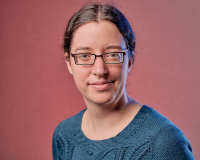Yaws
What is yaws?
Yaws is a tropical bacterial infection causing lesions in the skin and bones. It is spread by skin-to-skin contact with an infected lesion and primarily affects children, with around 75% of cases seen in young people under the age of 15. Efforts towards eradication were significantly strengthened with the discovery in 2012 when a single dose of oral azithromycin was shown to be an effective cure. Following an initial symptomatic phase, infected individuals can become asymptomatic for long stretches, with clinical symptoms recurring for up to 10 years later. While asymptomatic individuals are not infectious, they represent a large reservoir of infection and are difficult to identify, thus proving a hindrance to eradication.
Current elimination strategies
The current World Health Organisation (WHO) strategy for yaws elimination involves rounds of Total Community Treatment (TCT), which endeavours to treat all individuals regardless of disease status; and rounds of Total Targeted Treatment (TTT), which treats symptomatic individuals and their contacts. The intention of TTT is to treat asymptomatic individuals by assuming that they should be contacts of symptomatic individuals. Over multiple rounds of TTT it is hoped that eventually all infected individuals will be cured.
Our research
Our research focuses on using mathematical modelling to assist in yaws eradication efforts, ranging from considering different elimination campaign strategies to thinking about how to design surveillance programs that can determine when elimination efforts may cease without the risk of disease resurgence. Our model consists of households of individuals who may be susceptible (disease free), infectious (with clinical symptoms) or asymptomatic (carrying bacteria but without symptoms).

Using this model, fitted to household-level data from the Solomon Islands, we investigated the efficacy of TTT, by estimating what proportion of asymptomatic individuals are household contacts (i.e. share a house with) infectious individuals. Our model predicts that between 65% and 100% of asymptomatic individuals do not live with an infectious person, revealing limited efficacy of TTT for treating asymptomatic infections (Dyson et al., 2018).
Current research
Current research aims to assist in evaluating different potential strategies for yaws elimination. These include evaluating how many rounds of TCT and TTT would be required for elimination in different scenarios, including varying coverage levels and qualities of coverage during TCT and TTT, and including frequent community-based treatment at low coverages.
Publications
- Dyson, L., Crook, O., Bishop, A., Marks, M. and Hollingsworth, T.D. Targeted treatment of yaws with household contact tracing: How much do we miss? Am. J. Epidemiol. 187:4 837-844 (2018)
- Dyson, L., Mooring, E.Q., Holmes, A., Tildesley, M.J. and Marks, M. Insights from quantitative and mathematical modelling on the proposed 2030 goals for Yaws [version 1; peer review: 1 approved] Gates Open Res. 3:1576, (2019)
People
Warwick Researchers

Louise Dyson (Assistant Professor, University of Warwick)

Mike Tildesley Associate Professor, University of Warwick)

Alex Holmes (MathSys PhD student, University of Warwick)
External Collaborators

Michael Marks (Assistant Professor, London School of Hygiene & Tropical Medicine)
